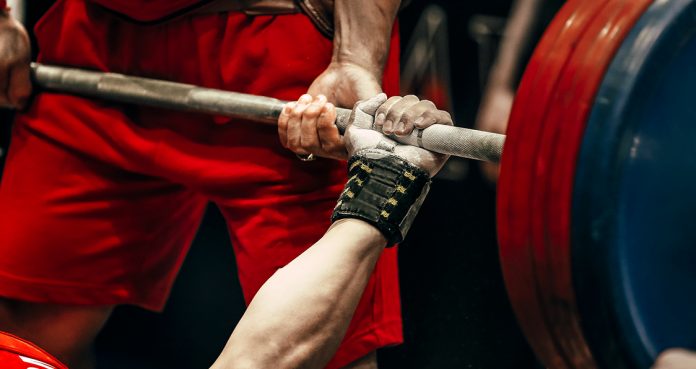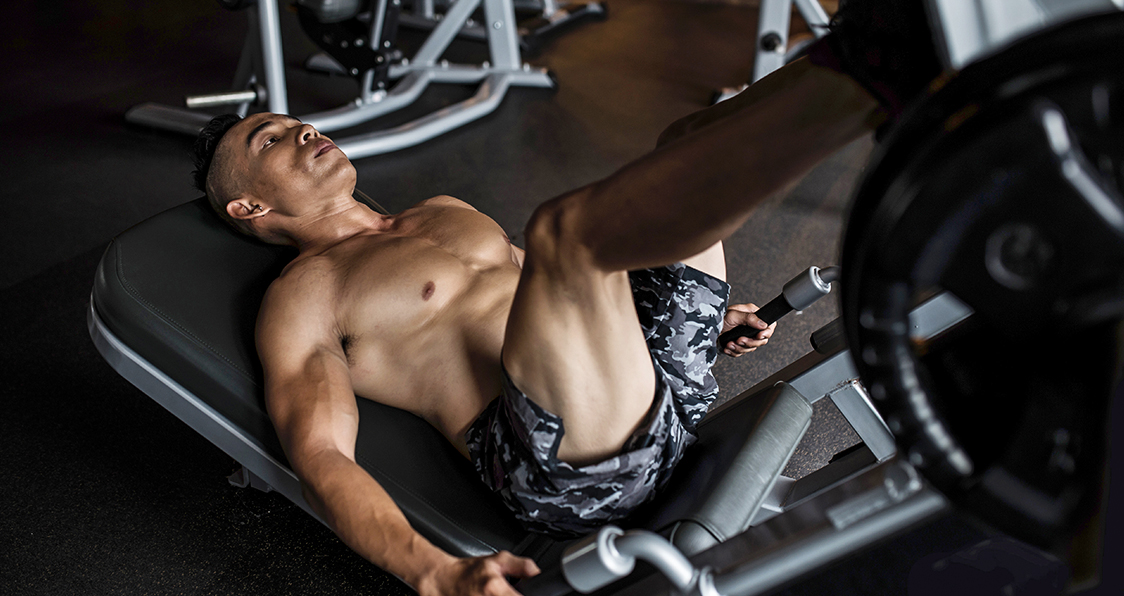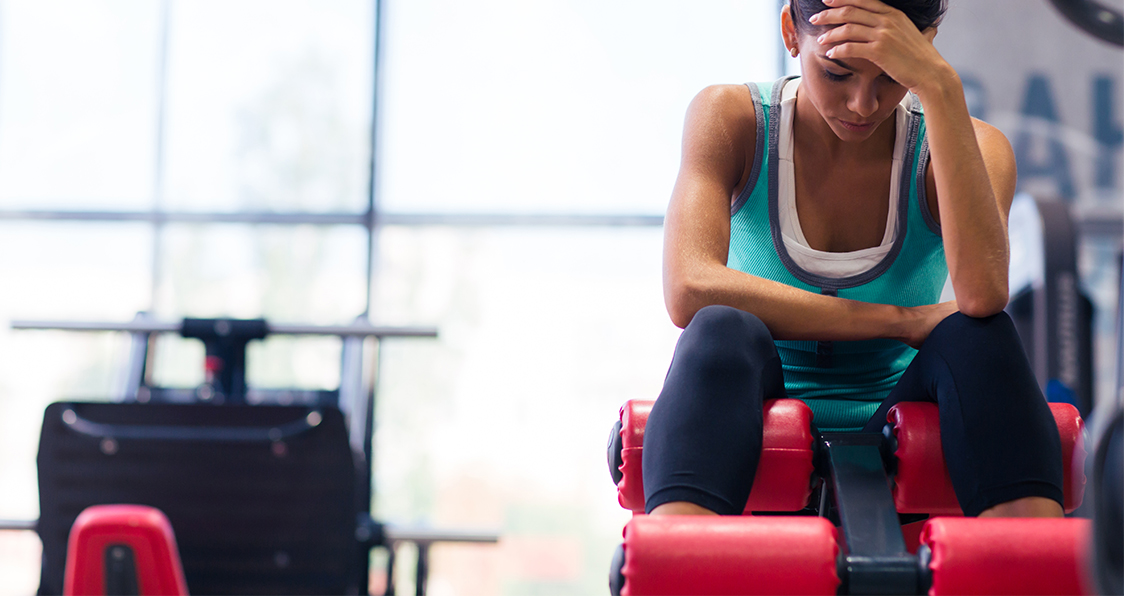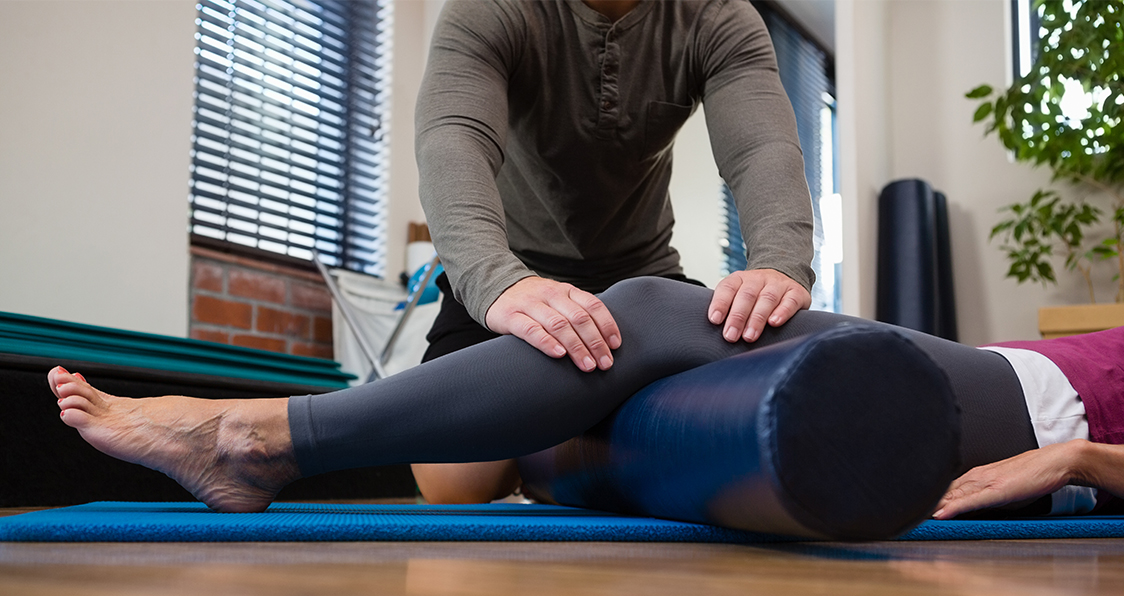Tag: mistakes

6 Common Mistakes Women Make in the Gym
These are the six most common mistakes women make in the gym.
Some time ago, fitness was a men’s thing but it’s changing as more women are joining the fitness scene. The female presence is now notable in gyms around the world. Although many women get a gym membership, only a few of them advance with their goals.
Most women who quit training shortly after joining a gym do so for more or less the same reasons. Avoiding these common mistakes will not only keep you on the fit lifestyle but will also speed up your progress.
Avoiding Resistance Training
Most women don’t like going near the weights in the gym. The most they do is lift the cute pink rubber dumbbells. The assumption that lifting weights can make them look masculine is what keeps them on the cardio equipment.
Working out with weights can help your muscles get in shape and firm up. Women don’t naturally produce enough testosterone which is the male hormone responsible for building muscle mass and size. So, if your goal is to build a toned and tight physique, make sure you hit the weight room.
Too Much Cardio
Women spend most of their time on the cardio equipment. Many girls do the cardio hoping it’ll help them tone up their bodies. Cardiovascular activities can result in weight and fat loss.
Although it might break your heart to hear this, there is nothing like spot-reduction when it comes to working out. If you perform high-intensity cardiovascular activities, it’ll result in fat and muscle tissue loss.
So ultimately it depends on what the goal is when going into the gym. If you’d like to retain some level of lean muscle – it’s important to balance out the cardio activities with weight training as well. If you overwhelmingly focus on cardio only – you’ll become thin like a twig and lose any muscle tone you were hoping to achieve as well.
Low-Intensity Training
Most girls opt for low-intensity workouts. Some girls focus on the number of sets and reps and completely ignore the intensity. Doing 15 sets in a workout isn’t going to make a difference if you don’t break a sweat.
Focus on making the most of your time in the gym. You can do shorter workouts but make sure they are high intensity. You should step out of the gym feeling you accomplished something.
Expecting Results Too Soon
As a newbie, you can’t expect to see results too soon. Before you see any muscular gains, your body undergoes structural changes which can take some time. You should focus on working out, and the gains will take care of themselves.
If you’re a beginner, you should expect to see changes in your physique in 5-6 months if you’re following a well-designed training program. Don’t get disheartened if the results take longer than you had anticipated. The wait will be well worth it.
Sticking To a Single Training Program
Monogamy is for relationships and not for training programs. Most women stick to the same training program. The typical girl’s training routine will have 10-20 minute on the treadmill, a couple of sets of squats and whatever other machines there is in the gym.
At the same time, changing training programs too often isn’t the best practice either. Follow a training program for 3-4 weeks before switching things up. Doing so gives your muscles ample time to get the best of the exercises and doesn’t let them get used to the workouts.
There’s two reasons for bringing variety into your workout. One is psychological – if you’re workouts become a grind they will be less enticing to continue doing. If you’re having a particularly bad day, a boring monotonous workout might be enough to make you want to skip. Changing up your routine makes working out more fun and more inviting to keep pushing through.
Variety also helps on a physical level. Your body adapts to what you are doing and eventually becomes more resistant to it. So mixing up the variety of your workouts and, of course, increasing the intensity or weight of your exercises as you improve is essential to keep evolving your physique.
Not Sticking to the Nutrition
Most girls think their fitness routine is over as soon as they leave the gym. Fitness is a lifestyle and it goes with you everywhere. You need to place the same importance on your nutrition and recovery as you put on your training.
Many women make the mistake of avoiding protein supplements thinking they are only for men. Following a balanced diet and taking proper rest can speed up your progress in the gym.
Do you make any of these mistakes? Let us know in the comments below. Also, be sure to follow Generation Iron on Facebook and Twitter.

5 Weightlifting Mistakes That Keep People Small, Weak, and Frustrated
Doing the Wrong Weightlifting In and Outside the Gym There is a reason why the majority of the gym-goers who work out on a regular basis don’t have that much to show for it and why only a small number of them build impressive physiques. If you thought that the […]
The post 5 Weightlifting Mistakes That Keep People Small, Weak, and Frustrated appeared first on What Steroids.

Most Basic Things To Avoid In Anabolic Steroid Cycle
A Quick Summary Many bodybuilders who are about to begin their first steroid cycle ask themselves what are some of the things they should strictly avoid in the planning of their cycle. Well, in this article, we will explore that and inform you about what are the most basic things […]
The post Most Basic Things To Avoid In Anabolic Steroid Cycle appeared first on What Steroids.

7 Common (But Lethal) Fitness Mistakes You Need To Avoid
Avoid These 7 Fatal Training Mistakes
Making mistakes is unavoidable while you’re learning something new, but if you don’t improve on these errors and keep doing them for an extended time, they can lead to fatal injuries.
In this article, we’ll be listing out the seven most common mistakes which people make in the gym. We hope you reflect on these errors and fix them if you’re committing any of them.
Not Warming Up
Most people make their first mistake as soon as they enter the gym and go right into the workouts. Not warming up your muscles before you start a workout can lead to muscle pulls, tears, and other injuries.
Before you get into a training session, make sure you’re stretching and warming up your muscles. Each warm-up session should last 10-15 minutes to prime your muscles for a workout.
Ego Lifting
Ego lifting is one of the most common phenomenons in gyms around the world. People try to lift heavier weights than they can handle. While you might get away with it a few times, your luck will surely run out sooner or later.
Iron is one of the best humblers. It’ll teach you your place if you don’t treat it with respect. Leave your ego at the door when you enter the gym or you might end up paying a big price for it.
Going “Raw”
The trend of lifting weights raw is seeing an uprise. Bros try to better each other by lifting heavier weights without using any gear like weightlifting belts, straps, sleeves or wraps. It’s understandable if you’re prepping for a raw lifting contest but if you’re doing it for the fun of it, a disaster is right around the corner.
Using gym gear can help eliminate unnecessary tension from your secondary and supporting muscles. Using support equipment doesn’t only help in avoiding injury, but also helps in better recruitment of the primary muscles groups.
Turning Dietitian
Fitness mistakes aren’t limited to the gym. Many people turn into pro dieticians and start designing diets for themselves. Some of these people end up shuffling their daily macro intake which does more harm than good. If you don’t know what you’re doing, it’s a better idea to hire a coach to design your diet and training plans.
Putting Form On The Back Seat
Some people confuse bodybuilding with weightlifting and think that they need to lift the heaviest weights possible to build muscles. In bodybuilding, the form takes the front seat while weights are in the back. Your goal is to break the muscle tissue using the right form.
Rest Is For The Weak
The passion for building muscle can be overwhelming. You need to remember that no matter how hard you train or how good your diet is, you won’t see the results until your muscles recover and recuperate from your workouts.
Juicing Up
It’s no secret many pro bodybuilders are on steroids. Beginners are prone to falling into the roid-trap. Some young people are influenced by the gym bros to start a cycle. Juicing up isn’t right for most people, and we advise our readers to avoid getting into it.
Header image courtesy of Envato Elements
Are you making any of these mistakes?
Let us know in the comments below. Also, be sure to follow Generation Iron on Facebook, Twitter, and Instagram.

Stop Making These Fatal Bench Press Mistakes
Most-Common Bench Press Mistakes Which Lead To Injuries
The bench press is one of the most popular exercises and is one-third of the three big compound lifts (deadlifts and squats being the other two). It also happens to be one of the first exercises people learn to perform when they start working out.
The gym bros use the bench to compete for the strongest-bro title. While the bench press is widely performed across gyms in the entire world, it’s also arguably responsible for causing the highest number of injuries.
Keeping Your Elbows Flared Out
Most people believe that to target their chest optimally they need to keep their elbows flared out. By doing it, they make the mistake of keeping their upper arms parallel to the barbell while performing the bench press.
You need to remember that your shoulder rotator cuffs are one of the stiffest muscle groups and don’t have much mobility. Make sure you’re keeping your elbows tucked in while performing the bench presses to eliminate unnecessary tension from the rotator cuffs.
Not Arching The Back
Bench pressing isn’t as simple as lying down on a bench and lifting the barbell for a few reps. You need to follow proper form to get the most out of the exercise while keeping the chances of an injury at a bare minimum.
You need to arch your back as you lie down on the bench. The arch should be big enough that your hand can pass between your back and the bench. Lying down with your back flat against the bench can take the tension off the chest and put it on the back.
Grabbing The Barbell With Too-Wide A Grip
Some people have the misconception that grabbing the barbell with the widest grip will have the most impact on their pectoral muscles. Having too-wide a grip does nothing more than putting needless tension on your rotator cuffs.
People worry that holding the barbell with too close a grip will target their triceps instead of their pecs. To target your chest optimally, grab the barbell with a slightly wider than shoulder-width grip.
Forgetting The Feet
One of the most overlooked aspects of bench pressing is the feet placement. You can generate a lot of power through your legs which can assist you in the bench press. Many people make the mistake of elevating their heels and keeping their toes floored or tapping their feet as they lift the weights while benching.
Having your feet placed flat on the floor and your legs spread to shoulder-width is essential in a solid bench press routine. By not driving through your feet and legs, you are leaving a lot of gains on the table.
Bouncing The Bar Off The Chest
In the veil of following a full range of motion, many people bounce the bar off their chest while benching. Bouncing the bar off the chest is one of the most common practices and has more disadvantages than benefits.
In the effort of lifting heavy weights by bouncing it off your chest, you can do some serious damage to your ribs. The spring-action can also limit your mind-muscle connection as your primary goal shifts to moving the weights for reps.
Also, if you’re bouncing the bar off the chest and still have to use a spotter, it’s a classic case of ego lifting. Check your ego at the door before you get to bench pressing as it has probably sent the most number of people to the hospital as compared to the other exercises.
How much do you bench? Let us know in the comments below. Also, be sure to follow Generation Iron on Facebook, Twitter, and Instagram.
Header image courtesy of Envato Elements.

Avoid These 5 Dieting Mistakes To Make Progress
5 Most Common Dieting Mistakes
It’s no secret that following the right diet is the key to losing weight or gaining muscle mass. Designing the right diet is like solving the matrix for most people, and they give up without trying.
Most of the people who do start a diet, give up soon after they don’t see any results. Almost all diets fail because of a few fundamental problems. If you avoid the common mistakes, you’ll be on your way to making serious progress.
Cutting Out The Fats Completely
When some people start a diet plan, they take fats to be the villain and design their diets to exclude the macronutrient from their diet completely. Removing fats from their diet is a big reason most people don’t see any results while dieting.
Fats are an essential macronutrient and play a vital role in joint and bone support along with maintaining an energy reserve in the form of fat which can be used by the body in times of emergency. Not consuming the proper amount of fats in your diet forces your body to store fat and can lead to joint pains and other functioning issues.
Not Doing Cardio
While following a customized diet plan for reducing fat or building muscle will start working on its own, you’ll need to add cardio to the mix to fasten up the process especially if your goal is weight loss.
Adding cardio to your training routine is a great way of maintaining a calorie deficit which will help you shed the extra kilos, and reduce the body fat percentage. You should consider adding a 10-minute session of HIIT cardio to your program.
Misunderstanding Carbs
After fats, carbohydrates are considered to be the enemies of fat loss by some people. Many of the rookies try to bring down their daily carb intake into double digits unknowing it’s going to do more harm than good.
As a rule of thumb, you shouldn’t drop down your daily carb consumption below 1g per pound of bodyweight until you’re in the final weeks leading up to a competition. If you’re reading this article, chances are you’re not going to step on stage anytime soon.
Becoming Way Too Strict
Many people get too strict and serious about their diets when they start out. They cut out all the fats and carbs from their diet and stick to a narrow and incomplete diet. These people eventually burn out and quit the fit lifestyle.
When you’re starting out, you need to follow a rational approach and gradually add or subtract from your diet. Cutting out your normal food too fast can make you feel drained out and you might end up deciding this lifestyle is not for you.
Jumping Ships
Some people get disheartened when they don’t see the results they were hoping to see. Thanks to the advancement in the dietary space, there are many different diets to follow and people sometimes get spoilt for choice.
When some people don’t see results, they end up deciding that the diet they are currently following isn’t suiting them and switch to a new diet. You need to give your body time to adjust to a diet so you can see results.
How many different diets do you know about? Let us know in the comments below. Also, be sure to follow Generation Iron on Facebook, Twitter, and Instagram.
Header image courtesy of Envato Elements

6 Most Common Leg Press Mistakes Everyone Makes – Including You
Leg Press Mistakes You Need To Stop Making
For many people, their self-respect is directly proportional to the amount of weight they can lift. Gym bros try to outdo each other by competing against one another in the gym, and the leg press is usually at the center of the abuse.
Although the leg press is a fairly easy exercise, many people still manage to screw it up. Our goal with this article is not to shame anyone. We’re listing out the mistakes so that other people can learn from them and avoid injury.
Going Too Heavy
We propose a strict ego-test before anyone can get onto the leg press machine. We don’t mean it figuratively, we literally want someone to question the lifter about his PR on the squat and deadlift before he can put on more than four plates on the machine.
The ego-lifters move the sled a couple of inches every rep before calling it a set. If you’re not able to maintain a complete range of motion (thighs touching the torso), you’d be better of lowering the weights.
Using Arms
Most people spot themselves by pushing their legs with their hands. The self-spot is acceptable if you’re training for failure and need a little assistance towards the end of the set. But if you need to push through your arms from the first rep, you have some soul searching to do.
On the other hand, some people leave a lot of gains on the table by raising their arms in the air or crossing them over their chest. Holding onto the sidebars or the pads can help you in generating thoracic pressure and keeping your core tight.
Lower Back
Some people make the mistake of lifting off their lower back from the pad. After your legs, your lower back is the muscle that is put under the most stress while performing the leg press.
If you feel pain or stress in your lower back while performing the exercise, you need to fix your posture. You can try adjusting the angle of the pad if you don’t see relief after making sure your lower back is not elevated.
Feet Placement
It’s not uncommon to see people performing the exercise with a messed up feet placement. In a normal stance, your feet should be placed at a shoulder-width on the platform. Your toes should be pointing out slightly (11 and 1 o’clock).
If you’re targeting the inner sweep of the quads, your feet will be wider than shoulder-width and the toes will be pointing farther outwards. And while training the outer sweep, your toes will be placed parallel and next to each other.
Knee Movement
Performing the leg press correctly requires you to learn the proper technique. While lowering the sled, your knees shouldn’t fold-in. You need to push-out your knees as you bring them closer to your chest.
In an orthodox position, your legs should be at the sides of your torso at the bottom of the movement. You also need to make sure your heels don’t come off the platform as you lower it down.
Back Placed Flat Against The Pad
This can get a little confusing as we just told you that your lower back shouldn’t be elevated. Remember – while, your upper and lower back should be placed against the pad, your mid-back should be slightly elevated.
You should maintain a big-enough arch so that your hand could pass between the pad and your back. Placing your mid-back on the pad will put unnecessary tension on your back and you won’t be able to maintain a full range of motion.
Which is your favorite exercise?
Let us know in the comments below. Also, be sure to follow Generation Iron on Facebook and Twitter.

Avoid These Training Mistakes To Get The Most Out of Your Workouts
The Mistakes To Avoid In Your Workouts
As much as you would like to have perfect workouts, small mistakes can deprive you of that happiness, especially if you’re a beginner. Most people make the mistakes listed in the article and by doing so leave gains on the table.
Read the article and carefully critique yourself if you’re making the mentioned errors. You might be making the mistakes without realizing it. You’ll notice a substantial improvement in your physique over time by fixing these errors.
Quantity Over Quality
Some people make the mistake of lifting too heavy when they should be focusing on their form. Your muscles don’t know how much weight is on the bar, your ego does. Leave your ego on the door when you enter the gym. Ego lifting does nothing more than increase the chances of injury in the gym.
Focus on your form and contracting your muscles with every repetition. You should also have a strong mind-muscle connection during your workouts. Achieving a pump can be a good indicator if your mind-muscle connection and muscle contractions are on point.
Letting The Intensity Drop
Many people let all their hard work go in vain by letting the intensity drop after they are done with a set. If your goal is to lose weight or build muscle mass, you should keep the intensity of your workouts as high as possible.
Give yourself a deadline and complete the workout within the specified time. Don’t waste the time between sets by using your phone or talking to people. Use the rest time to pose and stretch out the muscle.
Unstructured Training
Some people follow a vanilla training program which isn’t designed for their body. Your workout program should cater to your strengths and weaknesses. You should focus on building up your weaknesses while polishing your strengths to build a symmetrical physique.
Thoroughly analyze your body and look for lagging muscle groups. Design your training so it follows a structured approach to all your muscle groups. You’ll see your weaknesses disappear and aesthetics improve as you follow a customized training plan.
No Warm-Ups Or Cool-Downs
Many people start working out as soon as they hit the gym and walk out right after their last exercise. You are leaving gains on the table by not giving your body the proper warm-up and cool-down.
Prime your muscles for your workout session by stretching them out and doing a couple of lightweight warm-ups. Your muscles are filled with lactic acid and many other toxins after a workout and you can flush them out with a cardio session or foam rolling.
No Tracking
It’s incredibly important to set goals before you start training. Starting training without a goal is like leaving your home without a pre-determined destination. Once you have a goal, write it down on paper and track your progress weekly to ensure you’re heading in the right direction.
Track your body measurements, workouts, and how much weight you use on certain exercises. If you’re improving in all the aspects, keep going or otherwise make the necessary adjustments.
Header image courtesy of Envato Elements
Are you making any of these mistakes? Let us know in the comments below. Also, be sure to follow Generation Iron on Facebook and Twitter.

5 Foam Rolling Mistakes Most People Make
Foam Rolling Mistakes to Avoid
Foam rolling is a method of self-myofascial release. Regular foam rolling can help with increasing flexibility, reducing soreness, and eliminating muscle knots. A foam roller is a lightweight, cylindrical tube made of compressed foam.
Your muscles are tightly wrapped around with fascia which holds them together and gives them shape. In brief, foam rolling can help with loosening and warming up the fascia so it can give your muscle fibers room to grow bigger and stronger.
Not Applying the Right Pressure
Most people don’t know how much pressure to apply when they’re foam rolling. They either apply too much or too little pressure and make the process of foam rolling ineffective. If you’re rolling too lightly, it might not have much impact on your tense muscles.
Roll too hard, and you might add to the pain and end up tensing up your muscles. Different rollers put a different amount of pressure on your muscles. The hollow foam rollers apply more pressure as compared to the full cylinders, so choose your rollers accordingly.
Rolling the Joints
Not the joints you’re thinking about. We’re talking about the bone joints here. You should avoid rolling the joints and other boney areas like the shoulder blades, ankles, and parts of the hips and legs (like the knees and shins). Foam rolling these areas will cause nothing more than pain and discomfort.
Rolling the bones doesn’t help in loosening up the bones and tendons. You need to roll the muscles and tissues beneath. You should also avoid rolling the IT band (the tendon that runs along the outside of your thigh from the top of the pelvis to the shin bone) and instead focus on the quads, hamstrings, and glutes.
You’re Not Rolling the Upper Body
Since foam rolling was brought to the spotlight by runners, most people assume that this method of self-myofascial release is only for the lower body. Foam rolling the upper body can be a little tricky and you might need a lacrosse ball for the hard-to-reach muscles.
You should be foam rolling your pectoral muscles, lats, triceps and the muscles around the shoulder blades. The movement of the foam roller while rolling the upper body will be different as compared to the lower body and can take some practice to master.
Spending Too Much Time on Trigger Points
Many people think that spending a lot of time on tense spots will release muscle knots. On the contrary, putting too much pressure on the trigger points can lead to an increase in pain and irritation, and can sore up injured muscle tissues.
If you want to loosen up a tense area, you should start with rolling the general larger surface area around the muscle for 60 to 90 seconds and spend 30 to 60 seconds targetting the knotted tissues.
As you loosen up the area around a trigger point, you’ll likely indirectly decrease the stress and tension you feel in the problematic area.
Rolling the Lower Back and Other Delicate Muscles
While it’s okay to foam roll your upper and middle back, you shouldn’t be working your lower back with a roller. Since it’s difficult to balance a foam roller on your lower back, you might over-reach your spine while getting in the right position to roll out the muscle.
Foam rolling can be especially dangerous for your lower back if you have an exaggerated arch or any other pre-existing lower back issues. If you have a stiff lower back, use a lacrosse ball to target the tense muscles instead of a foam roller.
Header image courtesy of Envato Elements
How often do you foam roll? Let us know in the comments below. Also, be sure to follow Generation Iron on Facebook and Twitter.
